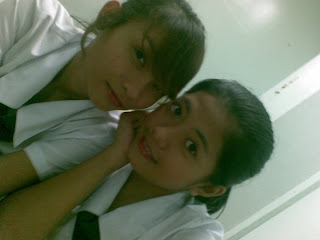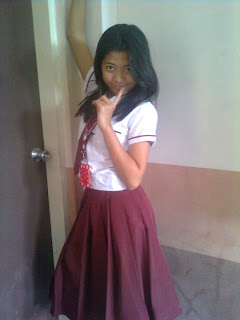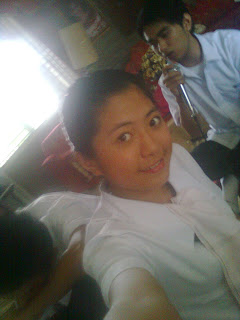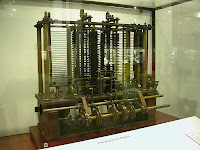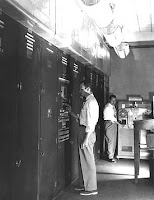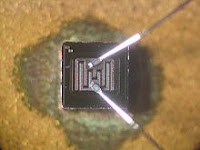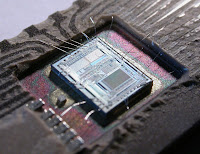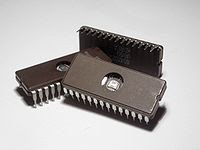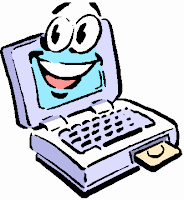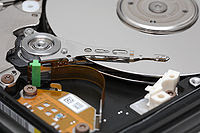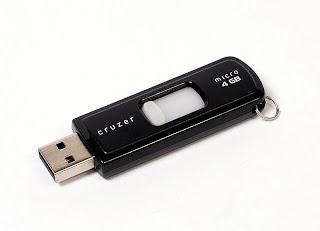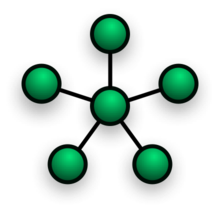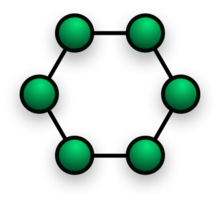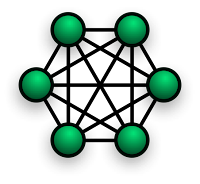BASICON
jhoi@STI
...elow sa lhat !!
jhoi@STI
...elow sa lhat !!
Saturday, October 9, 2010
Introduction
Hi have a good day !!
I'm Carissa Joy Apin but others call me "jhoi" only. I'm an it students from section 3. I'm 15 years old and i live in maria Cristina village Candelaria Quezon.
I am ordinary and friendly student also. i have many friends and i love making them smiled. my family is my best treasure so i want them to be proud of me.
I choose STI to be my partner for me to be able to sucess. I want to be a successful it programmer someday so i try my best to accomplish all of this.
Being student i believe that the journey of a thousand miles must begin with a single step. Every steps you make has its cause. just believe in yourself that you can do it. Have a strong faith in God because in God there s no impossible.
Prelim
Abacus
The abacus, also called a counting frame, is a calculating tool used primarily in parts of Asia for performing arithmetic Asia, Africa, and elsewhere. The user of an abacus is called an abacist.
Difference engine
The Difference Engine was an automatic, mechanical calculator designed to tabulate polynomial functions.Both logarithmic and trigonometric functions can be approximated by polynomials, so a difference engine can compute many useful sets of numbers.
In 1822, Charles Babbage proposed the use of such a machine in a paper to the Royal Astronomical Society on 14 June entitled "Note on the application of machinery to the computation of astronomical and mathematical tables". This machine used the decimal number system and was powered by cranking a handle.
Analytical engine
The analytical engine, an important step in the history of computers, was the design of a mechanical general-purpose computer by English mathematician Charles Babbage. In its logical design the machine was essentially modern, anticipating the first completed general-purpose computers by about 100 years. It was first described in 1837. Babbage continued to refine the design until his death in 1871. Because of the complexity of the machine, the lack of project management science, the expense of its construction, and the difficulty of assessing its value by Parliament relative to other projects being lobbied for, the engine was never built.
GENERATION OF COMPUTERS
First-generation machines
Even before the ENIAC was finished, Eckert and Mauchly recognized its limitations and started the design of a stored-program computer, EDVAC.John von Neumann was credited with a widely circulated report describing the EDVAC design in which both the programs and working data were stored in a single, unified store. This basic design, denoted thevon Neumann architecture, would serve as the foundation for the worldwide development of ENIAC's successors. In this generation of equipment, temporary or working storage was provided by acoustic delay lines , which used the propagation time of sound through a medium such as liquid mercury (or through a wire) to briefly store data. A series of acoustic pulses is sent along a tube; after a time, as the pulse reached the end of the tube, the circuitry detected whether the pulse represented a 1 or 0 and caused the oscillator to re-send the pulse. Others used William tubes, which use the ability of a small cathode-ray tube (CRT) to store and retrieve data as charged areas on the phosphor screen. By 1954, magnetic core memory was rapidly displacing most other forms of temporary storage, and dominated the field through the mid-1970s.
EDVAC
-(Electronic Discrete Variable Automatic Computer) was one of the earliest electronic computers. Unlike its predecessor the ENIAC , it was binary rather than decimal , and was a stored program machine.
ENIAC
ENIAC , short for Electronic Numerical Integrator And Computer,computer. It was a Turing-complete, digital computer capable of being reprogrammed to solve a full range of computing problems was the first general-purpose, electronic
ENIAC was designed to calculate artillery firing tables for the United States Army's Ballistic Research laboratory, but its first use was in calculations for the Hydrogen bomb.When ENIAC was announced in 1946 it was heralded in the press as a "Giant Brain". It boasted speeds one thousand times faster than electro-mechanical machines, a leap in computing power that no single machine has since matched. This mathematical power, coupled with general-purpose programmable, excited scientists and industrialists. The inventors promoted the spread of these new ideas by teaching a series of lectures on computer architecture.
Second generation: transistors
The bipolar transistor was invented in 1947. From 1955 onwards transistors replaced vacuum tubes in computer designs, giving rise to the "second generation" of computers. Initially the only devices available were germanium point-contact transistors , which although less reliable than the vacuum tubes they replaced had the advantage of consuming far less power. The first transistorized computer was built at the University of Manchester and was operational by 1953; a second version was completed there in April 1955. The later machine used 200 transistors and 1,300 solid-state diodes and had a power consumption of 150 watts. However, it still required valves to generate the clock waveforms at 125 kHz and to read and write on the magnetic drum memory, whereas the Harwell CADET operated without any valves by using a lower clock frequency, of 58 kHz when it became operational in February 1955.
Post-1960: third generation and beyond
The explosion in the use of computers began with "third-generation" computers, making use of Jack St. Clair Kilby's Robert Noyce's independent invention of the IC (or microchip), which later led to the invention of the microprocessor, by Ted Hoff , Federico Faggin Federico Faggin, and Stanley Mazor at Intel .
Fourth Generations
The development of user-friendly software packages that offered non-technical users many of the advantages of computer applications.
Fifth Generations
Computers that can understand human speech, can recognize patterns like faces and other complex images.
Gear
A gear is a rotating machine part having cut teeth, or cogs, which mesh with another toothed part in order to transmit torque . Two or more gears working in tandem are called a transmission and can produce a mechanical advantage through a gear ratio and thus may be considered a simple machine. Geared devices can change the speed, magnitude, and direction of a power source. The most common situation is for a gear to mesh with another gear, however a gear can also mesh a non-rotating toothed part, called a rack, thereby producing translation instead of rotation.
Microchips
Microchips (EPROM memory) with a transparent window, showing the integrated circuit inside. Note the fine silver-colored wires that connect the integrated circuit to the pins of the package. The window allows the memory contents of the chip to be erased, by exposure to strong ultraviolet light in an eraser device.
Integrated circuit
In electronics, an integrated circuit (also known as IC, chip, or microchip) is a miniaturized electronic circuit (consisting mainly of semi conductor devices , as well as passive components ) that has been manufactured in the surface of a thin substrate of semiconductor material. Integrated circuits are used in almost all electronic equipment in use today and have revolutionized the world of electronics.
COMPUTER APPLICATIONS
Business
Business rely on computers to handle important data, including employee records, payrolls, inventories, costumer records, invoices, and receipts.
Mathematics & Sciences
Computers can calculate members for us to know whats the answer in any mathematical problem.
Engineering
Engineers use computers to conduct experiments that are easier, less expensive and safer than real world experiments.
Medicine
Computers helps scientists design new drugs, scan patient's bodies for sign of disease, study how the brain works and practiced complicated operations.
Education
Computer graphics are now being widely used in textbooks and on instructional CD-Rom's videodiscs, and other computer technology.
Entertainment
Television news programs use computer to display weather patterns around the world.
Computer
A computer is a programmable machine that receives input, stores and manipulates data and provides output in a useful format.
Computer System Unit
A system unit, also known as a S.U., is the main unit of a personal computer, typically consisting of a metal or plastic enclosure containing the mother board, power supply, cooling fans, internal disk drives, and the memory modules that are plugged into the motherboard, such as video and network cards.
Display Device
A display device is an output device for presentation of information for visual, tactile or auditive reception, acquired, stored, or transmitted in various forms. When the input information is supplied as an electrical signal, the display is called electronic display. Electronic displays are available for presentation of visual,tactile and auditive information.
Hard disk drive
A hard disk drive(hard disk, hard drive, HDD) is a non-volatile storage device for digital data. It features one or more rotating rigid platters on a motor-driven spindle within a metal case. Data is encoded magnetically by read/write heads that float on a cushion of air above the platters.
Floppy disk
A floppy disk is a data storage medium that is composed of a disk of thin, flexible ("floppy") magnetic storage medium encased in a sruare shell.
USB flash drive
USB flash drives are typically removable and rewritable, and physically much smaller than a floppy disk.
Bit
-binary codes used by a computer consisting of either 1 or 0.
File
-a named collector of data that exists on a storage medium, such as a hard disk, a floppy disk or a CD.
Data File
-regarded as passive, data does not instruct the computer to do anything.
Executable File
-regarded as active, the instruction stored in the file cause the computer to carry out some action.
Data representation
-makes it possible to convert letters, sounds and images into electrical signals.
Digital Electronics
-makes it possible to convert sounds and images into electrical signals.
ASCII
-American Standard Code for Information Interchange.
Extended Binary Coded Decimal Interchange Code
EBCDIC has no modern technical advantage over ASCII-based code pages such as the ISo-8859 series or Unicode. There are some technical niceties in each, e.g., ASCII and EBCDIC both have one bit which indicates upper or lower case. But there are some aspects of EBCDIC which make it much less pleasant to work with than ASCII (such as a non-contiguous alphabet). As with single-byte extended ASCII code pages, most EBCDIC code pages only allow up to 2 languages (English and one other language) to be used in a database or text file.
Midterm
The Motherboard
The main goal is to connect all the hardware together like hard drives, memory modules, CPU, etc...A computer mother board is made of several parts, and each one has a hardware that can be connected to it. On the right, the image is showing a modern motherboard with all its parts.
If you click on the link under the image, you will find a larger image with the motherboard parts name.
Learning about your motherboard parts help to understand how upgrade able it is.
The Processor Socket
Sockets are the home for your Central Processor Unit (CPU). Several types of socket exist, but only 2 of them are really used, and both of them are used by Intel and AMD. The Pin Grid Array (PGA) and the Land Grid Array (LGA).
CPU Socket
I am discussing this subject in more details in the CPU socket type guide.
To know the form of CPU your motherboard can use and the range of powers and FSBs, look in your motherboard's book. The book that comes with your motherboard has a chart about it in the socket or CPU chapter.
Memory slots
Memory slots also call memory banks are for Random Access Memory modules (RAM). Each memory bank can receives a RAM module designed for a specific pc mother board. Ranging from 2 to 4 banks, you will encounter single and dual-channel technologies.

Memory Banks
To get the most of it, you need to fill 2 banks with the same module types, from the same manufacturer with exactly the same memory amounts.
If you want 1GB of memory, you need to use 2 512MB modules from the same manufacturer with the same technology type. This way, motherboards use the modules strength to its full capacity. Otherwise it may not work at all.
Like the socket, to find out the type, the manufacturer and the total MB or GB quantity you can use, take a look in your motherboard's book
Main Power Connector And The 4 Pins Connector
The main power connector is uses to get the electric energy from the power supply which the motherboard require to function properly.24 Pins Main Power Connector
Not all power supplies have the 2 types, but it is possible to work around the problem if you run into an incompatibility situation. Which will be discussed in a future power supply guide about how to install it and where to plug the connectors.
Floppy Drive Connector
Floppy Drive Connector
32 bit PCI Slots, AGP And PCIe
32 bit slots Peripheral Component Interconnect (PCI) are used to install sound cards, graphic cards, Ethernet cards and modems.
PCI, AGP or PCIe Ports
PCIe standard is even better than AGP standard, and mostly the only one used right now. Some like to say, PCIe is a AGP standard at x16 and it is the #1 choice for gaming machines right now.
More motherboard content will be written on it, especially for graphic cards.
Back Panel Connectors

Back Panel Connectors
Basic Flowchart Symbols
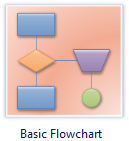
Flowcharts are the ideal diagrams for visually representing business processes. For example, if you need to show the flow of a custom-order process through various departments within your organization, you can use a flowchart. This paper provides a visual representation of basic flowchart symbols and their proposed use in communicating the structure of a well-developed web site, as well as their correlation in developing on-line instructional projects. A typical flowchart from older Computer Science textbooks may have the following kinds of symbols:
- Start and end symbols, represented as lozenges, ovals or rounded rectangles, usually containing the word "Start" or "End", or another phrase signaling the start or end of a process, such as "submit enquiry" or "receive product".
- Arrows, showing what's called "flow of control" in computer science. An arrow coming from one symbol and ending at another symbol signifies flow passes to the symbol the arrow points to.
- Processing steps, represented as rectangles. Examples: "Add 1 to X"; "replace identified part"; "save changes" or similar.
- Input/Output, represented as a parallelogram. Examples: Get X from the user; display X.
- Conditional (or decision), represented as a diamond (rhombus). These typically contain a Yes/No question or True/False test. This symbol is unique in that it has two arrows coming out of it, usually from the bottom point and right point, one corresponding to Yes or True, and one corresponding to No or False. The arrows should always be labeled. More than two arrows can be used, but this is normally a clear indicator that a complex decision is being taken, in which case it may need to be broken-down further, or replaced with the "pre-defined process" symbol.
- A number of other symbols that have less universal currency, such as:
- A Document represented as a rectangle with a wavy base;
- A Manual input represented by a rectangle, with the top irregularly sloping up from left to right. An example would be to signify data-entry from a form;
- A Manual operation represented by a trapezoid with the longest parallel side upmost, to represent an operation or adjustment to process that can only be made manually.
- A Data File represented by a cylinder
A flowchart is described as "cross-functional" when the page is divided into different "lanes" describing the control of different organizational chart units. A symbol appearing in a particular "lane" is within the control of that organizational unit. This technique allows the analyst to locate the responsibility for performing an action or making a decision correctly, allowing the relationship between different organizational units with responsibility over a single process.
Standard Flowchart Symbols
Flowcharts use special shapes to represent different types of actions or steps in a process. Lines and arrows show the sequence of these steps, and the relationships between them.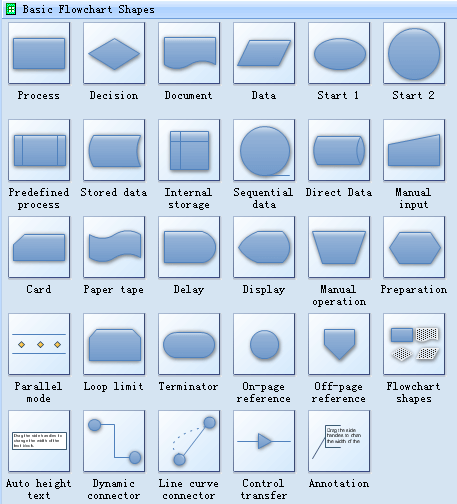
Prefinals
Network
Electric, electronic, biological, and biosocial- Electrical network
- Computer network
- Biological neural network
- Artificial neural network
- Social network
- Business networking, etically a subset of social networking, emically sometimes contradistinguished from it
- Radio network
- Telecommunications network
- Television network
- In mathematics, a type of digraph in graph theory, such as flow networks
Types of Communication Channels
 Electrical communications channels are either
Electrical communications channels are eitherwireline or wireless channels.
Wireline channels physically connect transmitter to receiver
with a "wire" which could be a twisted pair, coaxial cable or
optic fiber. Consequently, wireline channels are more private
and much less prone to interference. Simple wireline channels
connect a single transmitter to a single receiver: a
point-to-point connection as with the telephone.
Listening in on a conversation requires that the wire be tapped
and the voltage measured. Some wireline channels operate in
broadcast modes: one or more transmitter is
connected to several receivers. One simple example of this
situation is cable television. Computer networks can be found
that operate in point-to-point or in broadcast modes. Wireless
channels are much more public, with a transmitter's antenna
radiating a signal that can be received by any antenna
sufficiently close enough. In contrast to wireline channels
where the receiver takes in only the transmitter's signal, the
receiver's antenna will react to electromagnetic radiation
coming from any source. This feature has two faces: The smiley
face says that a receiver can take in transmissions from any
source, letting receiver electronics select wanted signals and
disregarding others, thereby allowing portable transmission and
reception, while the frowny face says that interference and
noise are much more prevalent than in wireline situations. A
noisier channel subject to interference compromises the
flexibility of wireless communication.
Bus
- In local area networks where bus topology is used, each machine is connected to a single cable. Each computer or server is connected to the single bus cable through some kind of connector. A terminator is required at each end of the bus cable to prevent the signal from bouncing back and forth on the bus cable. A signal from the source travels in both directions to all machines connected on the bus cable until it finds the MAC address or IP address on the network that is the intended recipient.
-
- The type of network topology in which all of the nodes of the network are connected to a common transmission medium which has exactly two endpoints (this is the 'bus', which is also commonly referred to as the backbone, or trunk) – all data that is transmitted between nodes in the network is transmitted over this common transmission medium and is able to be received by all nodes in the network virtually simultaneously (disregarding propagation delays.
Star
Main article: Star network
- Star networks may also be described as either broadcast multi-access or nonbroadcast multi-access (NBMA), depending on whether the technology of the network either automatically propagates a signal at the hub to all spokes, or only addresses individual spokes with each communication.
Extended star
A type of network topology in which a network that is based upon the physical star topology has one or more repeaters between the central node (the 'hub' of the star) and the peripheral or 'spoke' nodes, the repeaters being used to extend the maximum transmission distance of the point-to-point links between the central node and the peripheral nodes beyond that which is supported by the transmitter power of the central node or beyond that which is supported by the standard upon which the physical layer of the physical star network is based.Ring
ain article: Ring network
- In local area networks where the ring topology is used, each computer is connected to the network in a closed loop or ring. Each machine or computer has a unique address that is used for identification purposes. The signal passes through each machine or computer connected to the ring in one direction. Ring topologies typically utilize a token passing scheme, used to control access to the network. By utilizing this scheme, only one machine can transmit on the network at a time. The machines or computers connected to the ring act as signal boosters or repeaters which strengthen the signals that traverse the network. The primary disadvantage of ring topology is the failure of one machine will cause the entire network to fail.[citation needed]
Mesh
The value of fully meshed networks is proportional to the exponent of the number of subscribers, assuming that communicating groups of any two endpoints, up to and including all the endpoints, is approximated by Reed's Law.
Tree
Also known as a hierarchical network.The type of network topology in which a central 'root' node (the top level of the hierarchy) is connected to one or more other nodes that are one level lower in the hierarchy (i.e., the second level) with a point-to-point link between each of the second level nodes and the top level central 'root' node, while each of the second level nodes that are connected to the top level central 'root' node will also have one or more other nodes that are one level lower in the hierarchy (i.e., the third level) connected to it, also with a point-to-point link, the top level central 'root' node being the only node that has no other node above it in the hierarchy (The hierarchy of the tree is symmetrical.) Each node in the network having a specific fixed number, of nodes connected to it at the next lower level in the hierarchy, the number, being referred to as the 'branching factor' of the hierarchical tree.This tree has individual peripheral nodes.
Information technology
Information technology (IT) is "the study, design, development, implementation, support or management of computer-based information systems, particularly software applications and computer hardware", according to the Information Technology Association of America (ITAA).computers and computer softwaresecurely convert, store, protect, process, transmit, input, output, and retrieve information.
Finals
UTP Cable
The information listed here is to assist Network Administrators in the color coding of Ethernet cables. Please be aware that modifying Ethernet cables improperly may cause loss of network connectivity. Use this information at your own risk, and insure all connectors and cables are modified in accordance with standards. The Internet Center and its affiliates cannot be held liable for the use of this information in whole or in part.
T-568A Straight-Through Ethernet Cable

The TIA/EIA 568-A standard which was ratified in 1995, was replaced by the TIA/EIA 568-B standard in 2002 and has been updated since. Both standards define the T-568A and T-568B pin-outs for using Unshielded Twisted Pair cable and RJ-45 connectors for Ethernet connectivity. The standards and pin-out specification appear to be related and interchangeable, but are not the same and should not be used interchangeably.
T-568B Straight-Through Ethernet Cable

Ethernet Cable Instructions:
- Start on one end and strip the cable jacket off (about 1") using a stripper or a knife. Be extra careful not to nick the wires, otherwise you will need to start over.
- Spread, untwist the pairs, and arrange the wires in the order of the desired cable end. Flatten the end between your thumb and forefinger. Trim the ends of the wires so they are even with one another, leaving only 1/2" in wire length. If it is longer than 1/2" it will be out-of-spec and susceptible to crosstalk. Flatten and insure there are no spaces between wires.
- Hold the RJ-45 plug with the clip facing down or away from you. Push the wires firmly into the plug. Inspect each wire is flat even at the fr
- Pull the cable off the reel to the desired length and cut. If you are pulling cables through holes, its easier to attach the RJ-45 plugs after the cable is pulled. The total length of wire segments between a PC and a hub or between two PC's cannot exceed 100 Meters (328 feet) for 100BASE-TX and 300 Meters for 10BASE-T. ont of the plug. Check the order of the wires. Double check again. Check that the jacket is fitted right against the stop of the plug. Carefully hold the wire and firmly crimp the RJ-45 with the crimper.
- Check the color orientation, check that the crimped connection is not about to come apart, and check to see if the wires are flat against the front of the plug. If even one of these are incorrect, you will have to start over. Test the Ethernet cable.
- A straight-thru cable has identical ends.
- A crossover cable has different ends.
- A straight-thru is used as a patch cord in Ethernet connections.
- A crossover is used to connect two Ethernet devices without a hub or for connecting two hubs.
- A crossover has one end with the Orange set of wires switched with the Green set.
- Odd numbered pins are always striped, even numbered pins are always solid colored.
- Looking at the RJ-45 with the clip facing away from you, Brown is always on the right, and pin 1 is on the left.
- No more than 1/2" of the Ethernet cable should be untwisted otherwise it will be susceptible to crosstalk.
- Do not deform, do not bend, do not stretch, do not staple, do not run parallel with power cables, and do not run Ethernet cables near noise inducing components.
Basic Theory:

By looking at a T-568A UTP Ethernet straight-thru cable and an Ethernet crossover cable with a T-568B end, we see that the TX (transmitter) pins are connected to the corresponding RX (receiver) pins, plus to plus and minus to minus. You can also see that both the blue and brown wire pairs on pins 4, 5, 7, and 8 are not used in either standard. What you may not realize is that, these same pins 4, 5, 7, and 8 are not used or required in 100BASE-TX as well. So why bother using these wires, well for one thing its simply easier to make a connection with all the wires grouped together. Otherwise you'll be spending time trying to fit those tiny little wires into each of the corresponding holes in the RJ-45 connector.
Definition of Information Technology
In the broadest sense, information technology refers to both the hardware and software that are used to store, retrieve, and manipulate information. At the lowest level you have the servers with an operating system. Installed on these servers are things like database and web serving software. The servers are connected to each other and to users via a network infrastructure. And the users accessing these servers have their own hardware, operating system, and software tool.
MY FAVORITE TOPIC
My favorite topic of all that Sir Dennis discussed is all about the Networking. Its very important to know it because
your course will not only give you a qualification but also the possibility of networks for life. From the immediate company of classmates, through alumni bodies, to whole new webs of colleagues, being an MBA will catapult you into a whole new world of people and possibilities.
And this will not only be through your immediate business school or chosen job. Go to the right place to do your MBA and you can join the select 70,000 registered MBA students and alumni who can access the 10,000 annual worldwide job opportunities offered by Global Workplace.
CONCLUSION
In studying basic Computer Concepts with Sir Dennis Pua many things i have learn.It's a pleasure for me to study here in STI because aside from this is a Computer Computer School, the Professors and the Instructors are so very kind that's why I'm very proud being an STI'ers.
Subscribe to:
Posts (Atom)

